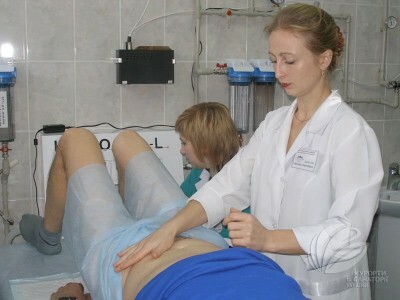1 What is lactose?
Lactose is a carbohydrate( sugar, such as glucose or fructose), is present in milk - both in bovine and female. It consists of glucose and galactose molecules. After entering the gastrointestinal tract, lactose disintegrates in the small intestine with a special enzyme to simpler foods that are absorbed into the blood. In some cases, when there is a deficiency of lactose, there may be various clinical symptoms.

We recommend that you familiarize yourself with
- Symptoms of lactose deficiency
- Treatment of intestinal colic in newborns
- What is cardia deficiency
- Effective agent for gastritis and gastric ulcer
2 Lactase deficiency
Congenital lactase deficiency is very rare. The first symptoms of the disease appear already in the first days of a newborn's life, immediately after receiving milk from the mother or modified milk containing lactose. Soon there is severe diarrhea.
In case of lactose intolerance, it should be excluded as soon as possible from the baby's diet, which causes the elimination of the symptoms of the disease, and also determines the correct development of the newborn. Children with lactose deficiency should comply with a lactose-free diet to avoid discomfort from the digestive system. From the diet of the child, it is sufficient to exclude milk and dairy products, to which dry milk is added.
In the diet of infants who have chronic diarrhea, milk formulas should be used without or with lactose restriction. In some cases, mixtures with soy be used. It happens that with the age of the child the symptoms of lactose intolerance are weakened, so you can gradually include milk in the diet. In addition, sincelactose facilitates the absorption of iron, a lactose-free diet should not be used for too long. It is recommended to give children dairy products: natural yoghurts, kefir without the addition of milk powder, because they contain probiotic bacteria, which favorably affect the microflora and peristalsis of the intestine.
3 Causes of intolerance to dairy products
Intolerance of lactose in infants is associated with transitional immaturity of the epithelium of the intestinal tract. Lactase deficiency is more common in premature infants, but in children born on time, it can also be a temporary problem. Lactase activity sometimes decreases with age, so adults sometimes do not tolerate cow milk.
-
 IMPORTANT TO KNOW! Gastritis? Ulcer? To have a stomach ulcer not turned into cancer, drink a glass. ..Read the article & gt; & gt;
IMPORTANT TO KNOW! Gastritis? Ulcer? To have a stomach ulcer not turned into cancer, drink a glass. ..Read the article & gt; & gt;
It is believed that lactose intolerance in infants may be one of the possible causes of colic. Lactose, which enters the digestive tract of the baby from milk of the mother and milk mixtures, will be improperly digested, retained in the intestine. It becomes a nutrient medium for intestinal bacteria, and the result is gas - hydrogen and lactic acid. This is expressed by bloating and diarrhea, sometimes frothy.

Lactose intolerance in children may occur due to several reasons - the initial one for the lactase enzyme itself( then, as a rule, the disease is caused genetically).And secondary, when in various diseases the mechanism of digestion and / or absorption of lactose is broken, despite the correct action of lactase. In the case of secondary causes - after recovery of the underlying disease symptoms of intolerance, as a rule, disappear.
Secondary causes result from intestinal damage in the course of the following diseases.
Celiac disease - the disease reaches the atrophy of intestinal villi, in the epithelium of which there is a deficiency of lactase. This causes symptoms of intolerance.
-
 Gastroenterologist VAZHENOV: "I beg you, if you began to worry about abdominal pain, heartburn, nausea, do not in any way do gases. .."Read more & gt; & gt;
Gastroenterologist VAZHENOV: "I beg you, if you began to worry about abdominal pain, heartburn, nausea, do not in any way do gases. .."Read more & gt; & gt;
When Crohn's disease is an inflammatory bowel disease, during which the entire wall of the intestine is damaged, which also worsens the absorption of carbohydrates.
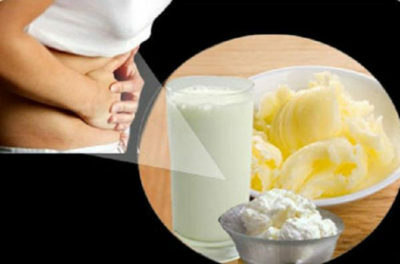
In infectious and parasitic diseases of the gastrointestinal tract, the most frequently observed rotavirus( in infants and young children) and adenoviruses( in older children).Poisoning can also be caused by bacteria - Escherichia coli, Salmonella, Shigella, parasites - lamblia lamblia, Entamoeba. As a result, the epithelium of the intestine is destroyed and, as with celiac disease, the digestion of carbohydrates deteriorates.
With use of certain drugs, mostly antibiotics or cytotoxic drugs in cases of cancer, intolerance arises. This causes the destruction of the natural bacterial flora of the intestine, which contributes to the development of the pathogens listed above.
4 Symptoms of the disease
Symptoms of lactose intolerance can occur in children of any age, but the younger the child, the more severe the symptoms. The severity of symptoms depends on the amount of milk consumed and on the form of food( better tolerated products such as kefir and yogurt).The most common symptoms of lactose intolerance are diarrhea, flatulence and abdominal pain, vomiting and belching. They appear at different times after eating.
TIP FROM THE MAIN GASTROENTEROLOGIST
Korotov SV: "I can recommend only one remedy for the rapid treatment of Ulcer and Gastritis, which is now recommended by the Ministry of Health. .." Read the reviews & gt; & gt;
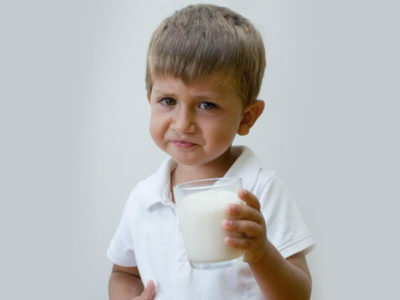
5 Diagnostic measures
In the diagnosis of intolerance, the doctor, in addition to conducting a conversation on the topic of symptoms, may appoint additional studies.

After 2 weeks of using a de-lactose diet, symptoms should recede. If after re-inclusion of this sugar in the diet the disease will appear again, you can suspect lactose intolerance in the child. It should be borne in mind that lactose is found not only in milk and its products, but can also be present in products such as bread, soups in powder, cakes, sweets.
The breath test is a valuable non-invasive study. It is concluded in the oral fasting of a certain dose of lactose and measuring the hydrogen concentration in the exhaled air. Since lactose is the medium for colon bacteria, in people with intolerance to this sugar, the hydrogen concentration in the exhaled air will be greater than that of healthy ones.
Fecal matter is being studied. If it is acidic, this indicates intolerance to carbohydrates. In the case of this study, it should be borne in mind that infants and young children have a more acidic stool,they consume large amounts of lactose with breast milk, which promotes the development of anaerobic bacteria( Lactobacillus, Bifidobacterium), which cause stool oxidation.
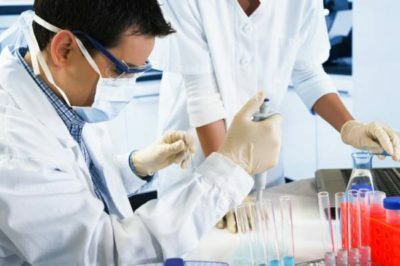
6 Treatment measures
Treatment of lactose intolerance in children includes a diet with the exception of foods that cause unpleasant symptoms. However, their complete elimination from the diet is not always required. Typically, it is sufficient to limit the amount of lactose consumed to the dose tolerated by the baby, and an absolute ban is required only in rare cases of congenital lactase deficiency.

Elimination diet can cause deficiency of components such as calcium( lactose contributes to its absorption in the intestine) or protein, which in children can lead to growth disorders. In such cases it is necessary to add calcium to the diet. For children under 2 years of age, it is recommended to use mixtures with lactose substitutes. Older children tolerate kefirs and yoghurts well. Treatment is also carried out with the use of preparations containing an artificially produced enzyme called lactase. It is given to the child together with products containing lactose. The enzyme lactase in the drops is available in pharmacies. Appropriate amount of drops should be given to the child immediately before breastfeeding or added to the formula. If lactase is added to the formula, make sure that it is not hot, since high temperatures cause the enzyme to break down.
Treatment with lactase preparations can be safely used for several months, but it should be controlled by a doctor.
If lactase is not needed, enzyme removal should be done gradually.
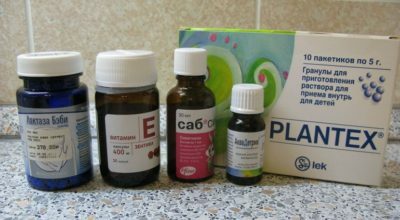
To control the excess of gases in the gastrointestinal tract, which is the result of a deficiency of lactase, it is possible to use preparations containing simethicone.
7 The opinion of the doctor Komarovsky about the problem
The main method of treating lactose deficiency is the complete exclusion from the diet of food containing lactose. Lactase deficiency, says Komarovsky, does not appear as often as it is diagnosed. In addition, the children's doctor is sure that in the first months of the child's life it is unacceptable to completely abandon lactose-containing products. Many doctors advise breastfeeding mothers not to breastfeed and switch to a lactose-free mixture. Komarovsky is categorically against such a method. He assures that the abolition of breastfeeding will cause greater harm to the health of the baby than its continuation.
To avoid problems with the baby's gastrointestinal tract in the case of breastfeeding, Dr. Komarovsky advises, the proper feeding technique should be followed. Milk, which appears at the beginning of suction, is rich in lactose, so if in 1-2 hours the baby will be fed from another breast, it will again receive a portion saturated with this substance. If a lot of time has passed after feeding, it is best to feed the baby from one breast.
Komarowski believes that colic because of transient lactose intolerance is not an indication for termination without consulting a breastfeeding physician or changing the milk formula to a lactose-free one. The enzyme lactose is produced in the newborn's gastrointestinal tract not immediately. This takes about 3-4 months. Therefore, diagnosing lactose deficiency is a real crime.
- 1 What is lactose?
- 2 Lactase deficiency
- 3 Causes of intolerance to dairy products
- 4 Symptoms of the disease
- 5 Diagnostic measures
- 6 Treatment measures
- 7 Opinion of the doctor Komarovsky about the problem
Lactase deficiency in newborns can be the cause of various unpleasant symptoms from the digestive tract - bloating, excessive gas production, colic and diarrhea. Often used the wrong name of the disease - lactose deficiency. The infants with lactose intolerance require a corresponding diet using lactose-free modified milk. What is the cause of this disorder, and what is the treatment for a deficiency of lactose?
Do you have gastritis?
GALINA SAVINA: "How easy is it to cure gastritis at home for 1 month. A proven method is to write down a recipe. ..!"Read more & gt; & gt;


